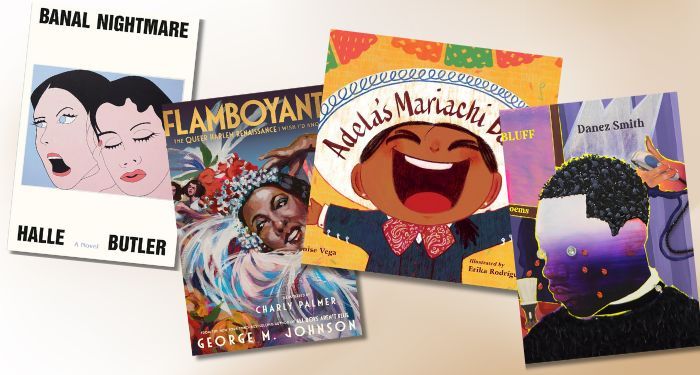 Photo by Pixabay
Photo by Pixabay
Who is the primary readership for your book? And have you stretched it too far or too thin in your book proposal’s target audience section?
Of all the areas I try to help nonfiction authors better understand, this one can be the most confounding, as I’ve discussed before. It’s common for writers to describe a readership that’s too broad to be meaningful, in the hopes of demonstrating the wide appeal or potential. For example:
“This book is for Baby Boomers.” That’s about 75 million people; not all of them are really your audience. “This book is for people seeking greater happiness in their lives.” But who isn’t seeking greater happiness? “Women make up more than 60 percent of all book purchasers and will be the main audience for this book.” It’s always a mistake to describe the US book buying audience as your audience.But there can be the reverse problem, too. Authors who’ve internalized the message not to cast the net too widely (who have heard me say, “Your book is not for everyone and anyone”) may get so granular that it’s like reading the cross-tabs of a survey. E.g., “This book is for women aged 21–29 who live in urban centers and shop at Target while listening to Taylor Swift.” Maybe a handful of projects would benefit from getting that granular, but I don’t suggest trying to outperform Procter & Gamble in your consumer analysis. So what are we trying to do?
You want the agent or publisher to be nodding their head at your reader description and thinking, “Yes, I understand exactly who you’re talking about. I understand why this book will help those specific people. I see a path to reaching and communicating with those readers effectively.” We want a readership with clear edges. We want a readership that we can draw a circle around and say, “It’s really for these people (not those) and here’s why.”
A well-defined target audience may include one or more of the following:
Demographic information: age, gender, marital status, geography, education, income, etc. Not all books are for a particular demographic, but some are absolutely dependent on them. For example, a successful book proposal on investing money will likely be defined by demographics because someone who’s in their twenties will think about money quite differently than someone who is approaching retirement. You could write a book about investing for twenty-somethings called The 50-Year Nest Egg that would not be well-suited for someone turning 65 or 70. Or you could write a book about investing for someone who’s 10 years away from retirement who hasn’t yet saved a dime. Different demographics, different books, same topic. Established category readership. Novelists rarely have to define the readership for their book because there is an established audience for specific genres of fiction (e.g., romantasy, cozy mystery, domestic suspense, etc). So instead, novelists use comps to point to who their readership is within their genre. The same can be true for some nonfiction categories as well. For example, there is an ongoing readership for true crime stories. There are podcasts, TV shows, movies, books, and subreddits continually meeting demand for true-crime fans. But you do have to go further than simply saying “there’s an established readership.” Your target audience description should reference trends in your genre/category, how the zeitgeist is bringing forward certain types of stories (and how yours ties into that), and/or how you’re shedding new light or putting a twist on something we think we know. Publishers still need a clear idea of how they might market and position your book to an existing readership, where they would send review copies, where they would advertise, etc. How do you know if your nonfiction book has an established category readership? Look for book reviewers, niche media, publications, podcasts, and influencers who are focused on reviewing and discussing new books, movies, documentaries, TV shows, and trends. There are likely annual “best of” lists for your category, too. Trend or zeitgeist signals. Think back about 10 years ago, when cannabis was starting to become more widely available and legal across the country, in various forms. More and more people with chronic pain or illness were interested in using it, but they were overwhelmed with the choices available and where to buy from and who to trust. (They still are.) Science journalist Cheryl Pellerin pitched a book specifically for this (ongoing) moment in time, Healing with Cannabis. Both your proposal overview and your target readership section can discuss statistics and media-based evidence of a new set of circumstances and a new developing audience. You’ll be discussing this new environment or social phenomenon that’s taking shape that merits a book. Pellerin combined this trend discussion with the next category: people with specific problems. People with specific problems or goals. No matter their demographic, some people have very specific problems they’re trying to solve for or goals they want to achieve. But the danger here is defining the problem in such a way that you’re really talking about the human condition. People who want to eat better? Lead healthier lives? Have better relationships? Advance in their career? These are all issues that affect most middle-class and upper-class people (the key book-buying demographic, of course). And that’s when authors might be tempted to cite granular demographics and say, “Well, this is for 40–49 year olds who want to have better relationships!” Well, OK, but why them? What’s happening at that age? What’s the trend or zeitgeist factor that’s affecting them and not others? How does your book break new ground on this problem that will get their attention? Maybe it’s because you already have an established name or platform or reputation and you already reach the target readership for the book. If that’s the case, then you will likely have no problem describing your target readership because you’ve been serving them for a long time, heard all their questions, know their behaviors, and understand them inside and out. You know what they need or want before they know it themselves.And that truly is what publishers and agents want to see come through in that target audience section: that you know on a bone-deep level what these readers respond to, and your book will deliver on it because you have that level of knowledge, experience, and insight that few other people possess. Going through a list of statistics or demographic cross-tabs doesn’t reflect that knowledge; it’s just a set of numbers. Stats are great for showing the magnitude of a problem or the growth of certain trends, and they can usefully upend assumptions that agents or publishers might have about your topic or your readership. But you have to add in intimate details as well, like what your reader is enthusiastic about, motivated by, preoccupied with, or struggling with. That drives the need for your book and how the book is marketed.
The challenge for memoirists
Publishers and agents turn down a lot of memoir because the author is unknown. They get a lot of grief for that, but it makes sense on a business level. Most of us only buy memoirs if they’re written by people we already know, particularly celebrities or people in the news. Or we might buy a memoir because of that person’s proximity to greatness, because they are/were an insider, because they’ve lived a life we will never lead, because we want to live vicariously through them. For such memoirs, it’s likely there will be media attention and publicity.
So where does that leave unknown memoirists? Your writing has to be call-everyone-you-know-and-tell-them-about-it good, or your story needs to tie into the zeitgeist in some way or be aligned with societal trends and discussions that will motivate people to read your memoir and talk about it. For example, some years ago, there were a series of deals for what I’d call “climate change memoir.” Think about the most pressing sociopolitical issues of the day, and I guarantee you’ll find memoirs being sold that speak to those issues. Here’s a memoir deal from October 2024 announced in Publishers Marketplace: “Ber Anena’s THE LIES WE TELL FOR AMERICA, an exploration chronicling the author’s time at Columbia University during the COVID-19 pandemic, considering identity, immigration, and the stark realities of receiving a Western education as an international student.”
Is your target audience self-limiting?
Book proposals come together far more easily when the author has confidence and clarity on their target audience. And the easiest proposals to write are those where the audience is somewhat self-limited or even very self-limited. It’s a useful concept when determining whether you’ve sufficiently defined and narrowed your target audience so that a publisher or agent will be nodding their head.
 Very self-limiting: Books where the audience is obvious from the book title or subtitle alone. Examples: how to coach youth sports, Instant Pot desserts for people on keto diets, travel guide to Porto for port wine enthusiasts. You still need to describe who these people are and trends relating to this readership. E.g., a travel guide to Porto for port enthusiasts is probably going to appeal mostly to older, British and European men and not 20-something women backpacking through Europe. Very self-limiting books may fail to secure a book deal because the audience appears too small to the agent/publisher or it’s on the decline. Good luck selling a book today for writers on how to make a living by freelancing for magazines. But that is exactly the sort of book that did well when I first got into the book publishing business in 1998.
Somewhat self-limiting: Books where the audience is somewhat obvious but might be bigger than first meets the eye. Example: the art of painting animals on rocks. This was the first book of a continuing series with millions of copies sold over its lifetime. It appeals to hobbyist painters, the sort of people who shop at Michaels. You aren’t going to find research studies and demographics of people who paint on rocks. But there’s plenty of market evidence that people like craft painting and people loved this concept (and it was executed beautifully by the author). Another example: Poe for Your Problems by Catherine Baab-Muguira. This is an upmarket self-help book based on the life of Edgar Allan Poe. It’s going to have direct appeal to fans of Poe, but there’s a wider (yet still specific) audience of readers of literary self-help. You can read the author’s proposal here.
Not self-limiting: This is dangerous territory, where the book topic might really be about the human condition, or it may touch the majority of the US population, or it could potentially be relevant to everyone. This is where authors struggle the most to say something useful in the target audience section—they’re trying to wrap their arms around the globe. Let’s use eating healthier or good nutrition as an example. It’s a goal that a lot of Americans have and it’s a shelf with countless books. The topic is not self-limiting. So unless you have a significant platform or established readership for this topic, you need to be focused about the audience you’re addressing. There are many ways that Americans might eat healthier and approaches will vary based on one’s life stage, resources, goals, and medical conditions. Are you focusing on a particular age group or demographic? Are you focusing on people on restricted diets? Are you focusing on people with particular challenges in their lives (lack of time, kids who are picky eaters)? Whose problems are you solving for?
Very self-limiting: Books where the audience is obvious from the book title or subtitle alone. Examples: how to coach youth sports, Instant Pot desserts for people on keto diets, travel guide to Porto for port wine enthusiasts. You still need to describe who these people are and trends relating to this readership. E.g., a travel guide to Porto for port enthusiasts is probably going to appeal mostly to older, British and European men and not 20-something women backpacking through Europe. Very self-limiting books may fail to secure a book deal because the audience appears too small to the agent/publisher or it’s on the decline. Good luck selling a book today for writers on how to make a living by freelancing for magazines. But that is exactly the sort of book that did well when I first got into the book publishing business in 1998.
Somewhat self-limiting: Books where the audience is somewhat obvious but might be bigger than first meets the eye. Example: the art of painting animals on rocks. This was the first book of a continuing series with millions of copies sold over its lifetime. It appeals to hobbyist painters, the sort of people who shop at Michaels. You aren’t going to find research studies and demographics of people who paint on rocks. But there’s plenty of market evidence that people like craft painting and people loved this concept (and it was executed beautifully by the author). Another example: Poe for Your Problems by Catherine Baab-Muguira. This is an upmarket self-help book based on the life of Edgar Allan Poe. It’s going to have direct appeal to fans of Poe, but there’s a wider (yet still specific) audience of readers of literary self-help. You can read the author’s proposal here.
Not self-limiting: This is dangerous territory, where the book topic might really be about the human condition, or it may touch the majority of the US population, or it could potentially be relevant to everyone. This is where authors struggle the most to say something useful in the target audience section—they’re trying to wrap their arms around the globe. Let’s use eating healthier or good nutrition as an example. It’s a goal that a lot of Americans have and it’s a shelf with countless books. The topic is not self-limiting. So unless you have a significant platform or established readership for this topic, you need to be focused about the audience you’re addressing. There are many ways that Americans might eat healthier and approaches will vary based on one’s life stage, resources, goals, and medical conditions. Are you focusing on a particular age group or demographic? Are you focusing on people on restricted diets? Are you focusing on people with particular challenges in their lives (lack of time, kids who are picky eaters)? Whose problems are you solving for?
Some of the most competitive categories to sell a book are business/money, health and fitness, self-help or self-improvement, cookbooks/food, and anything related to current events or issues that affect our daily lives. Or: categories that deal with issues that potentially affect everyone. So book proposals in these categories can be astoundingly weak if the audience has been left wide open and the author has not limited the audience. Ask: Does this issue pretty much concern everyone? If so, you may struggle with the target audience section until you determine specifically who you want to help and adjust your book’s unique selling position to address that audience.
Is memoir self-limiting? Not really, and this is part of the challenge of selling memoir. Most memoirists are encouraged to “find the universal” in their memoir and show how it’s going to be relevant to other people. This can be taken too far. If you’re an unknown writer, your memoir will most likely appeal to a small group of people who care about the issues or questions you are exploring (refer back to the zeitgeist discussion earlier). In some cases, I think it’s better to rely on your comp titles to indicate your target audience, as discussed here.
Sometimes authors write the book proposal not knowing who they’re writing for because they haven’t decided yet. The proposal writing process then forces clarity. If you’re struggling with your target audience section, that’s a good sign you’re on the road to clarity. Lean into the discomfort. Why are you having trouble? Are you trying to describe an audience you don’t in fact know or don’t care about? Are you guessing at or inventing the audience? (Should you do some research first?) Who do you really want to reach? Whose life do you really want to change? Who are you drawing the circle around, and who do you want to bring in closer? That’s your target readership.












 Bengali (Bangladesh) ·
Bengali (Bangladesh) ·  English (United States) ·
English (United States) ·